We all love a good mystery, and what’s better than a treasure hunt? This has led many historians to an obsession with finding lost shipwrecks.
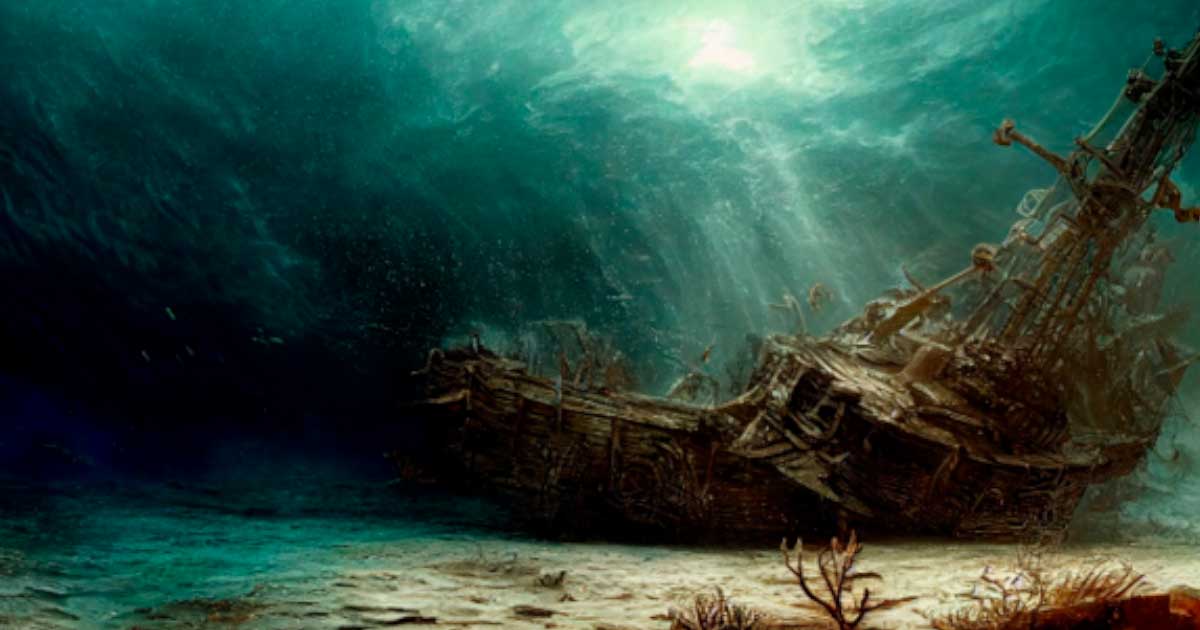
Some of them do it in the hope of finding lost Spanish galleons filled with gold; some do it just because they love the hunt. Over the centuries, countless vessels have been lost beneath the waves, including warships, pirate ships, and trade vessels. Finding them is time-consuming and expensive, and bringing them back to the surface even more so. Here are some of the most famous (and valuable) shipwrecks still lost at sea.
1.The Santa Maria: Columbus’s Flagship
The Santa Maria may just be the most famous ship on this list. When Christopher Columbus first set sail on his infamous first voyage to the Americas on August 3rd, 1492, he took three ships with him; the Niña, the Pinta, and the Santa Maria .
The Santa Maria was Columbus’s flagship, but not for long. On Christmas Eve 1492, the helmsman handed over the ship’s wheel to an inexperienced cabin boy while he went for a nap. Unsurprisingly, the cabin boy didn’t know what he was doing and promptly sailed the ship straight into the nearest coral reef, just off modern-day Haiti.
Luckily, with the help of local natives, the crewmen managed to quickly empty the ship’s hold of cargo and provisions. The ship sank the following day and is believed to have been buried by sediment.
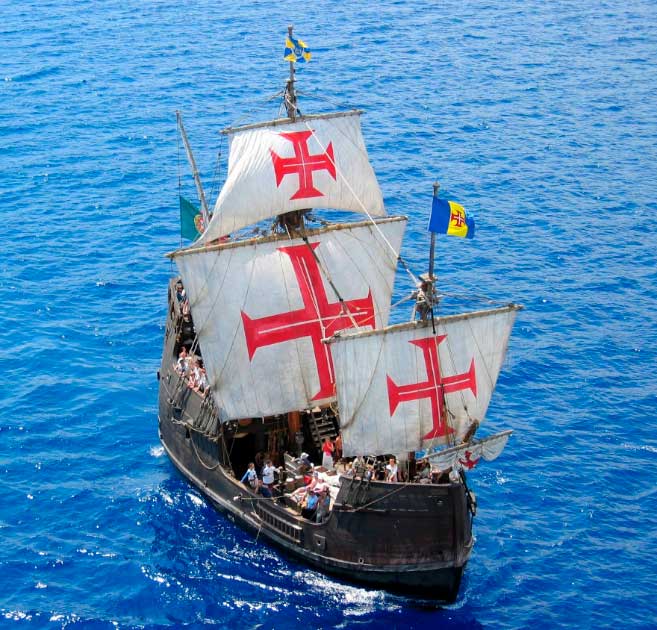
A replica of the lost shipwreck of Columbus’s Santa Maria is a popular tourist attraction in Madeira, Portugal ( Digishooter / Adobe Stock)
Today, the ship’s precise location is a mystery. The closest explorers have gotten was in 2014 when an underwater explorer named Barry Clifford claimed to have found the Santa Maria by using information hidden in Columbus’s journals. A team of UNESCO experts came in to verify the claims but found proof the wreck Clifford had found was much later, either 17th or 18th century in origin. The Santa Maria remains the Holy Grail for underwater explorers looking to make a name for themselves.
2.HMS Endeavour: The Sad Fate of Cook’s Ship
Perhaps it’s a good thing the Santa Maria sank; it was spared the depressing fate of the HMS Endeavour . The HMS Endeavour was the ship of the famous British explorer Captain James Cook during his first voyage of discovery.
From 1768 to 1771, Cook used the HMS Endeavour to explore the Pacific Ocean. It was the first ship to circumnavigate New Zealand and the first European ship to reach Australia’s eastern coast.
Unfortunately, a few years after Cook’s first voyage and return home, the Endeavour was sold. It ended up in the hands of a private buyer who cared little for the ship’s heritage and renamed it the Lord Sandwich (a little less impressive sounding). Then, during the American Revolution , it was chartered by the British Royal Navy, which used it to carry troops to New England. This became the ship’s undoing. While moored in Rhode Island’s Newport Harbor in 1778, the Endeavour and twelve other ships were sacrificed to form a blockade against an incoming French fleet.

Although the shipwreck of the HMA Endeavor has not been definitively located, you can visit a replica in Sydney, Australia (HPeterswold / CC BY SA 3.0 )
While modern historians know where Endeavour’s remains should be, they still haven’t been found. Both the Rhode Island Marine Archaeology Project and Australian National Maritime Museum have spent the last few years searching the waters surrounding Newport for the ship’s rotting remains.
They have had some success and claimed in early 2022 to have found the ship . However, many experts feel their claim was premature and more research must be done to prove that what they found is not one of the eleven other ships sunk that day.
3.Bonhomme Richard: A Plucky Old Frigate
Not all lost shipwrecks are those of explorers. For naval ships, being lost at sea comes with the territory. Take for example the Bonhomme Richard , an aging frigate donated to the Continental Navy by the French during the American Revolution.
Commanded by Captain John Paul Jones, the Bonhomme Richard set sail in 1779 and soon proved that its age didn’t mean it wasn’t still a formidable ship. In just a few weeks, it managed to capture sixteen British vessels. Then, on September 23rd of the same year, it went toe to toe with the HMS Serapis just off the northeast coast of England.
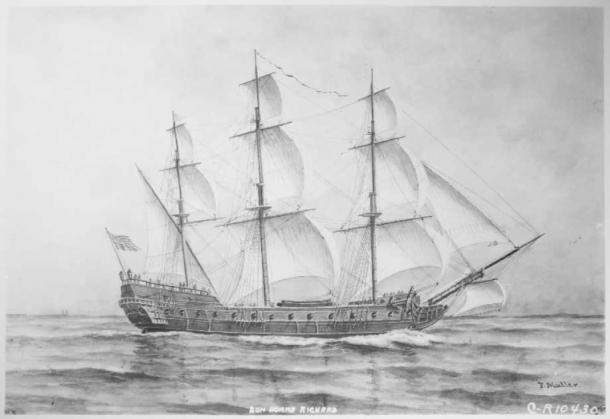
The Bonhomme Richard was lost to sea after a battle with the HMS Serapis in 1779. Its shipwreck has not been found. ( Public Domain )
It was a brutal naval battle that had begun with the cocky English telling Jones to surrender as his aging ship had no chance against one of the English navy’s best. The English turned out to be wrong, and Jones and his men did indeed manage to capture the HMS Serapis . Unfortunately, it came at a cost.
The Bonhomme Richard had caught fire during the battle and received several fatal hits below its waterline. Jones and his crew spent 36 hours trying to save their plucky ship, but ultimately had to let her sink into the icy waters of the North Sea.
Today the Bonhomme Richard is one of the most searched-for lost ships in the world. Everyone from British locals and professional salvage companies to the U.S. Navy has looked for it. A few explorers have found wrecks that seem to fit the Bonhomme Richard ’s description but none have been confirmed, yet.
4.Flor de la Mar: Sunken Treasure
The previous ships on this list are largely sought after due to their historical importance. However, very often underwater explorers have a very different reason for searching for these wrecks: financial gain.
The Flor de la Mar is believed to have had a hold full of diamonds, gold, and other untold riches when it sank. In 1511, the ship was called to assist Portugal’s conquest of Malacca. The 400-ton ship had had a successful nine-year career, but its best years were behind it. At this point, it had a reputation for springing leaks and constantly needing repairs.
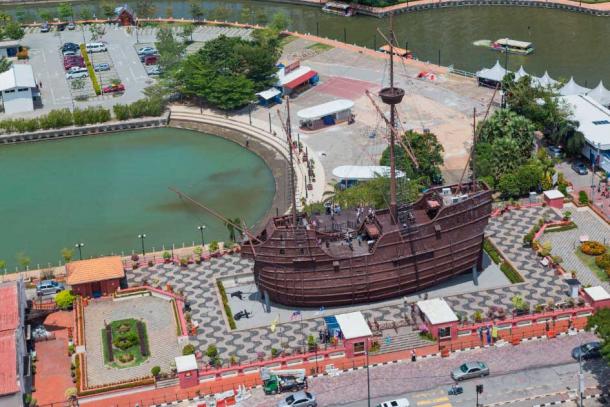
Like other famous lost shipwrecks, a replica of the Flor de Mar is on display near the site of its loss. The views of the city seen from the Taming Sari Tower. Malacca City, Malacca, Malaysia. (Marcin Konsek / CC BY SA 4.0 )
After the successful conquest of Malacca, it was laden with valuables and set sail back home to Portugal, despite the fact it had been officially deemed unsafe. It never made it. On November 20, 1511, somewhere near the Strait of Malacca , it hit a fierce storm and sank. While some of the crew survived, many more drowned.
Experts believe the ship was carrying roughly $2.6 billion worth of treasures when it sank. Various salvage companies and explorers have searched for this lost treasure trove, most notably treasure hunter Robert Marx, who has spent $20 million so far searching for the Flor de la Mar . So far, he hasn’t made his money back.
5.The Merchant Royal: A Fortune Lost Off the Cornish Coast
It’s not just the Spanish and Portuguese who had a nasty habit of losing ships laden with treasures at sea. The English also lost their fair share.
The most painful was probably the Merchant Royal, which sank in 1641. It was a trade ship that had been carrying gold and silver, which, if found today, would be worth tens or even hundreds of millions of dollars.
The most galling thing about the loss of the Merchant Royal is where it sank. Not in enemy waters, or in far-off lands, but just off Land’s End in Cornwall. The ship was sailing back to London after a successful trading trip in the West Indies when it sprang a serious leak.
The ship was already well over its recommended load and was in a poor state. Hitting a patch of rough weather was the final straw, causing its pumps to break down. It was all too much, and the ship sank.
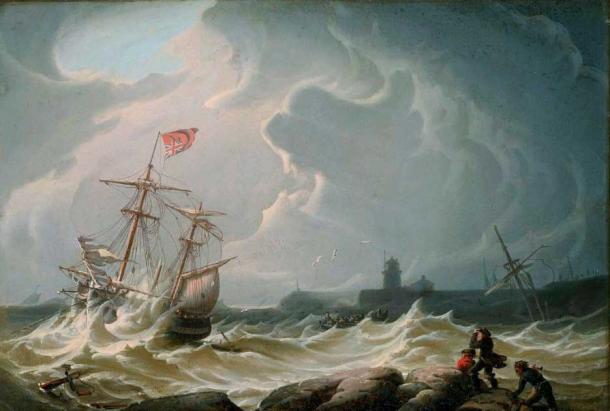
The Merchant Royal Ship sank in a storm off the coast of Cornwall. 1828 painting Ship in a Storm by Robert Salmon. ( Public Domain )
The Merchant Royal is often referred to today as the “ El Dorado of the Seas,” due to the fact it is believed to hold around $1.5 billion worth of gold. Amateur treasure hunters and marine archaeologists alike have searched the waters off Cornwall for the ship.
In 2007, a team from Odyssey Marine Exploration caused a stir when they found a wrecked ship they believed to be the Merchant Royal . Coins recovered from the wreck showed it to be a Spanish frigate, however. In 2019, the Merchant Royal ’s anchor was found , but the location of the ship itself remains a mystery.
6.Le Griffon: Lost in the Great Lakes
Not all ships are lost at sea. The Le Griffon , or Griffin, as it was known, was a French ship that operated in America’s Great Lakes during the 1760s.
She was the first sailing ship to cruise the Great Lakes and was a three-masted ship built by the French explorer Rene-Robert Cavelier, Sieur de La Salle. He had used the ship during an early expedition to the North American frontier. He sailed her to the Niagara River and used her to explore parts of Lake Erie.
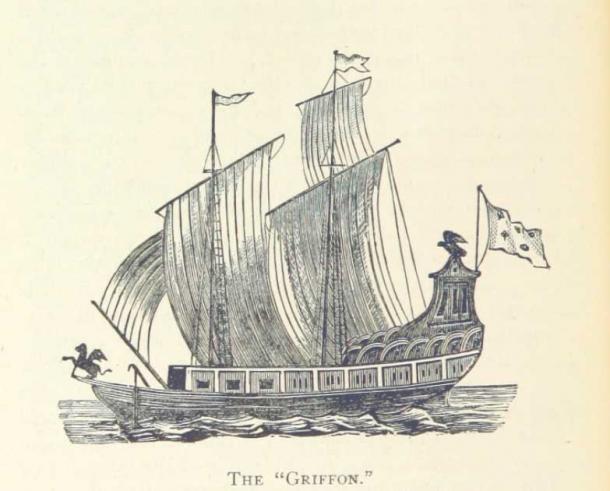
A drawing of Le Griffon from 1882. This lost shipwreck should be easier to find, since it’s in Lake Michigan rather than the ocean. ( Public Domain )
Le Griffon ’s last trip came in September 1679, when she set sail from Green Bay into Lake Michigan. She was carrying a small crew of six men and a cargo of furs for trade. Her destination was Mackinac Island, but she never made it.
Today, her fate is a mystery; all we know is the ship, along with her crew and cargo, were all lost. There are two prevailing theories. The first is that the ship hit a heavy storm and sank. The second is that the crew mutinied, stole the cargo, and scuttled the ship.
The ship is often referred to as the ‘Holy Grail of Great Lake shipwrecks,’ and various teams over the years have searched for it. There was much excitement in 2014 when two treasure hunters claimed to have found the ship, but rather embarrassingly, their discovery turned out to be a steam-powered ship from the 19th or 20th century.
7.USS Indianapolis: Sunk by the Japanese
The youngest entry on our list is the USS Indianapolis , which sank in 1945. The ship was a Portland-class heavy cruiser of the United States Navy. The ship had a distinguished service history, having served as the flagship for Admiral Raymond Spruance from 1943-1944 during the Fifth Fleet’s battles during WWII.
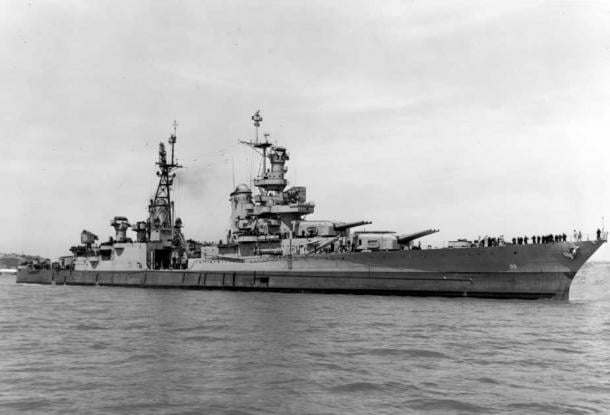
One of the final photos of the USS Indianapolis from July 1945, shortly before it was sunk by a Japanese attack ( Public Domain )
Having survived many battles during the war, the Indianapolis met its ultimate fate just after a top-secret mission. It had just completed a high-speed delivery of uranium and other bomb components meant for “Little Boy” (the first nuclear weapon ever used in combat) to Tinian Naval Base when it was ambushed by the Japanese submarine I-58. It sank within twelve minutes.
Of its 1,195 crewmen, around 900 survived the initial shipwreck. Unluckily, they were stranded in shark-infested waters and it took several days for Navy planes to locate them. By the time they had been rescued, only 317 men remained. The rest had been either eaten by sharks or died from saltwater poisoning, exposure, or dehydration.
Today, it is remembered as the worst American naval disaster of WWII, and the ship is still missing.
8.The USS Cyclops: A Victim of the Bermuda Triangle?
It would be improper to finish an article on lost shipwrecks without at least mentioning the Bermuda Triangle . Our last entry is one of the most famous victims of this mysterious patch of the North Atlantic Ocean.
The USS Cyclops was quickly commissioned when the USA joined the First World War, and launched in May of 1910. It originally served along the East Coast of the United States before being handed over to the Naval Overseas Transportation Service in January 1918.
The ship was sailing from Rio de Janeiro to Baltimore when it disappeared. No one is sure why it sank, but there are several working theories. Some like to point to the fact it was traveling through the Bermuda Triangle when it sank, but there are more practical options.
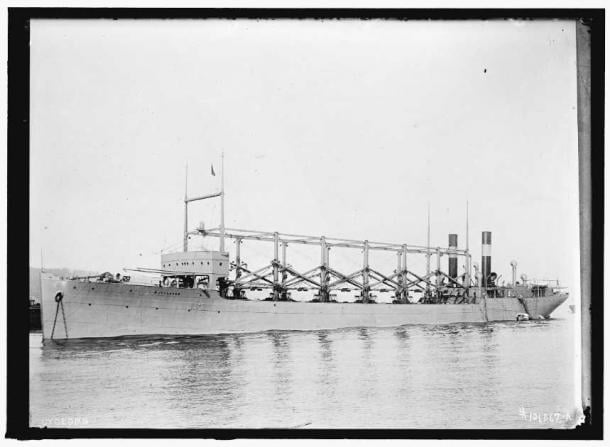
A photo of the USS Cyclops, circa 1915. This lost shipwreck has been subject to conspiracy theories, since it sank in the famed Bermuda Triangle ( Public Domain )
The first is that it is believed the USS Cyclops was overloaded when it sank, carrying 11,000 tons of manganese as well as 306 crew. Combined with the fact a storm was reported in the area around the time the ship sank, and the ship’s class was known to have structural problems, this seems the most likely explanation.
Another option is that since this was towards the end of the war it could have been a German U-boat that sank the ship. A third theory is that the ship’s captain was drunk at the helm and somehow scuttled his ship. Until explorers manage to find the Cyclops’s final resting place, we won’t know.








